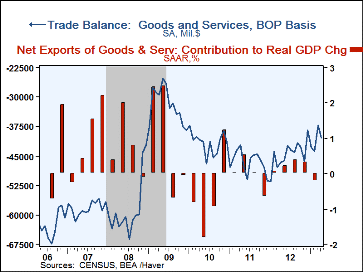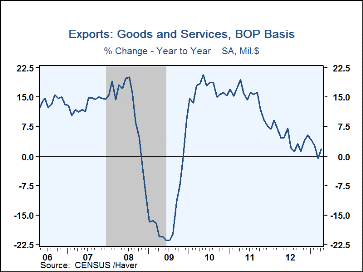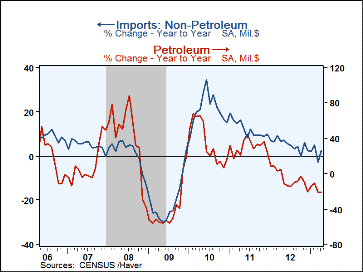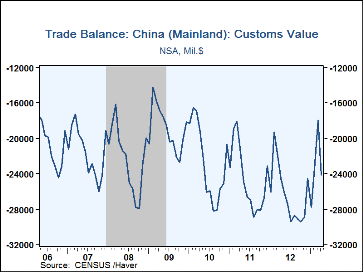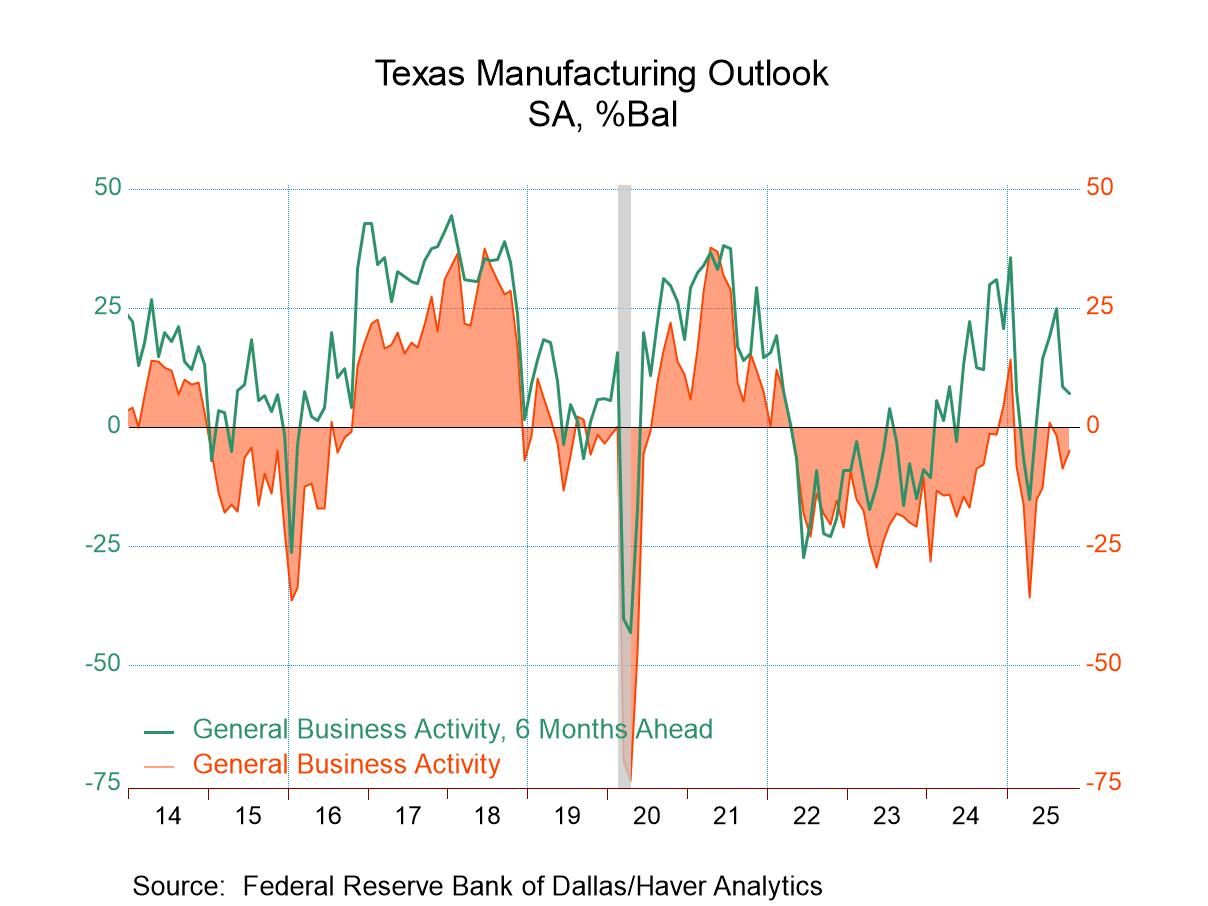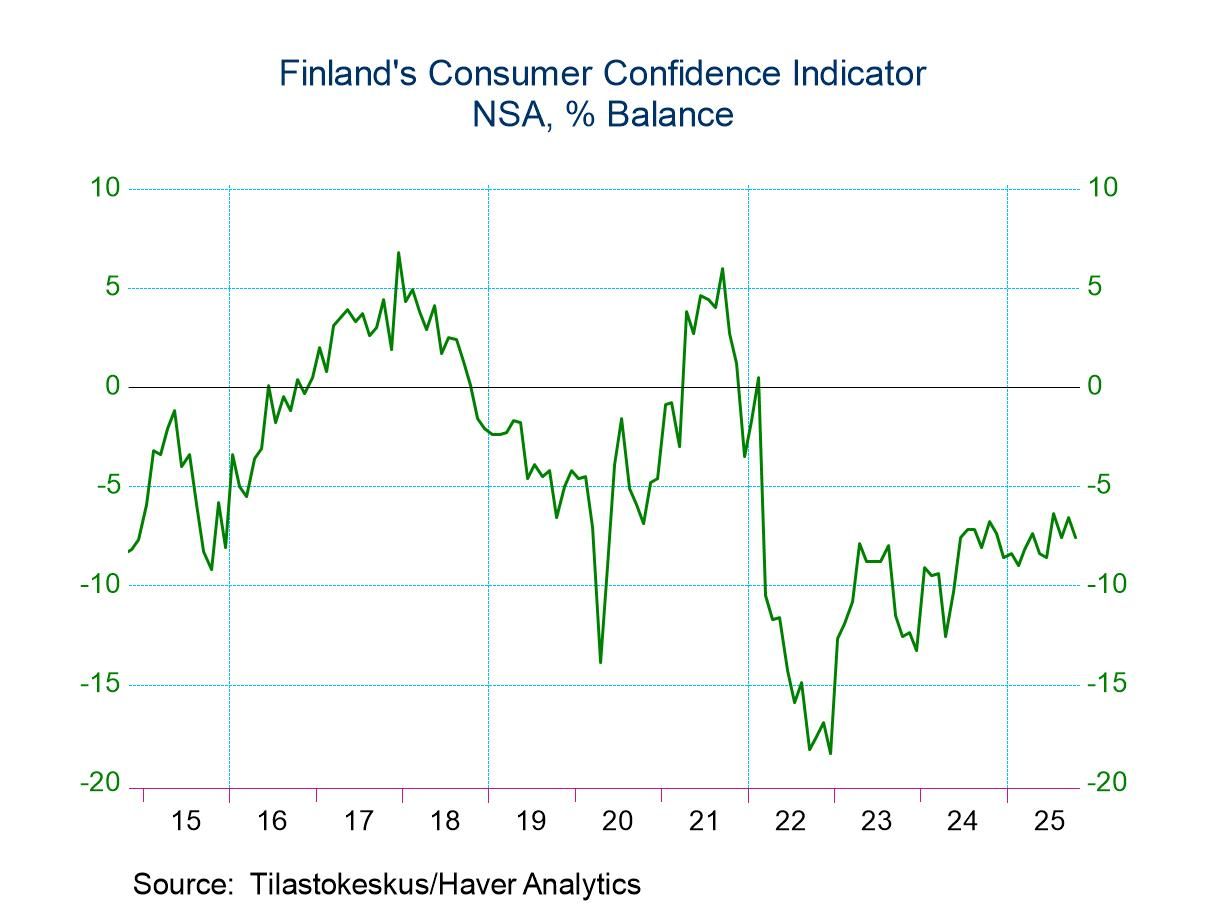 Global| Jun 04 2013
Global| Jun 04 2013U.S. Trade Deficit Deepens as Imports Recover
by:Tom Moeller
|in:Economy in Brief
Summary
The U.S. foreign trade deficit deepened during April to $40.3B from $37.1B in March, revised from $38.8B. A $41.0B deficit had been expected. Data were revised back to January 1999. A 2.4% rebound (-1.4% y/y) in imports caused the m/m [...]
The U.S. foreign trade deficit deepened during April to $40.3B from $37.1B in March, revised from $38.8B. A $41.0B deficit had been expected. Data were revised back to January 1999. A 2.4% rebound (-1.4% y/y) in imports caused the m/m deterioration. Exports also recovered a lesser 1.2% (1.7% y/y). In chained 2009 dollars, the deficit in goods deepened to $47.6B. Real imports increased 3.3% (0.1% y/y) while real exports rose 2.0% (1.9% y/y).
The constant dollar value of nonauto consumer goods exports led the total's increase with a 13.5% jump (12.1% y/y). Motor vehicle exports also posted a firm 4.9% rise (4.2% y/y) while real capital goods exports gained 1.9% (0.4% y/y). Exports of foods, feeds and beverages fell 1.0% (-10.9% y/y) and industrial supplies exports slipped 0.5% (+2.4% y/y). Services exports gained 0.7% (4.3% y/y). Travel exports rose 0.9% (7.5% y/y) as the dollar's low value prompted more visits to the U.S. from abroad. Passenger fares, however, fell 2.4% (-1.0% y/y).
The quantity of petroleum product imports rose 5.6% m/m but was down 9.1% y/y. The price of crude oil rose further m/m to $97.82 from $96.95 yet was down from the $109.69 high last year. Real imports less petroleum increased 3.9% in April (2.7% y/y). Real auto imports rebounded 5.8% (5.5% y/y) while real consumer goods excluding autos jumped 6.9% (2.9% y/y). The constant dollar value of capital goods imports increased 2.5% (-0.0% y/y) but real imports of foods, feeds & beverages imports edged up 0.5% (4.8% y/y). Nominal services imports gained 0.8% (2.8% y/y) as travel imports increased 1.0% (2.6% y/y) but passenger fares fell 1.5% (+4.4% y/y).
By country, the April trade deficit in goods with mainland China deepened to $24.1B and reversed its sharp March improvement. Exports to China gained 6.2% y/y but U.S. imports ticked 0.3% higher y/y. With Japan, the deficit deepened to $6.9B. U.S. exports fell 13.1% y/y while imports slipped 0.8% y/y. The deficit with the European Union deepened sharply to $12.4, nearly its deepest since 2006. U.S. exports fell 5.4% y/y while imports rose 7.3% y/y.
The international trade data can be found in Haver's USECON database. Detailed figures are available in the USINT database. The expectations figures are from the Action Economics consensus survey, which is carried in the AS1REPNA.
| Foreign Trade (Current Dollars) | Apr | Mar | Feb | Y/Y | 2012 | 2011 | 2010 |
|---|---|---|---|---|---|---|---|
| U.S. Trade Deficit | $40.3B | $37.1B | $43.8B | $46.6B (4/12) |
$534.7B | $556.8B | $499.4B |
| Exports (%) | 1.2 | -1.0 | 0.2 | 1.7 | 4.6 | 14.5 | 16.9 |
| Imports | 2.4 | -3.7 | 0.7 | -1.4 | 2.8 | 13.9 | 19.5 |
| Petroleum | -1.7 | -6.5 | -5.3 | -20.9 | -5.6 | 30.7 | 32.5 |
| Nonpetroleum goods | 3.6 | -4.0 | 1.8 | 2.4 | 5.2 | 12.1 | 20.8 |
Tom Moeller
AuthorMore in Author Profile »Prior to joining Haver Analytics in 2000, Mr. Moeller worked as the Economist at Chancellor Capital Management from 1985 to 1999. There, he developed comprehensive economic forecasts and interpreted economic data for equity and fixed income portfolio managers. Also at Chancellor, Mr. Moeller worked as an equity analyst and was responsible for researching and rating companies in the economically sensitive automobile and housing industries for investment in Chancellor’s equity portfolio. Prior to joining Chancellor, Mr. Moeller was an Economist at Citibank from 1979 to 1984. He also analyzed pricing behavior in the metals industry for the Council on Wage and Price Stability in Washington, D.C. In 1999, Mr. Moeller received the award for most accurate forecast from the Forecasters' Club of New York. From 1990 to 1992 he was President of the New York Association for Business Economists. Mr. Moeller earned an M.B.A. in Finance from Fordham University, where he graduated in 1987. He holds a Bachelor of Arts in Economics from George Washington University.


